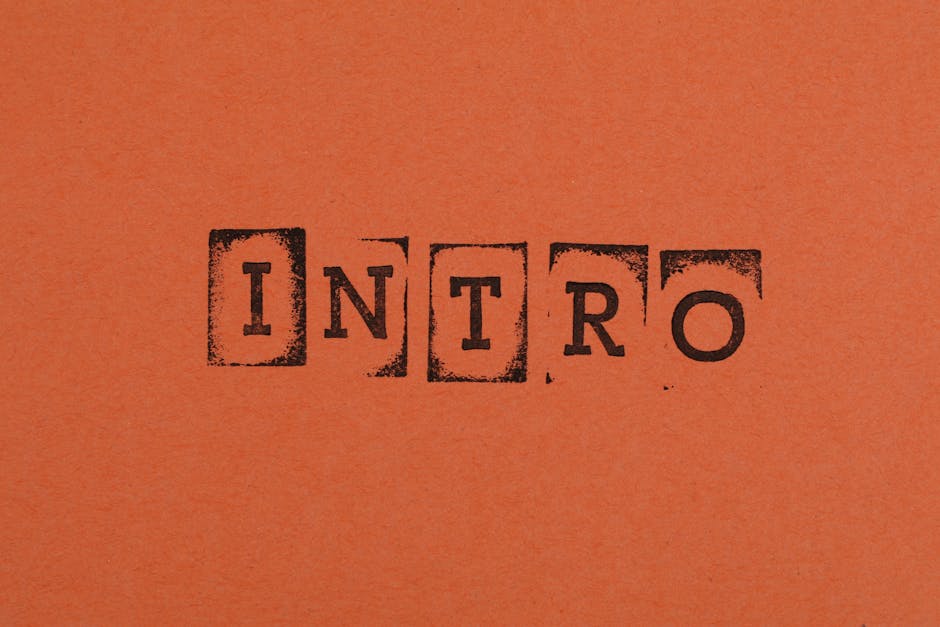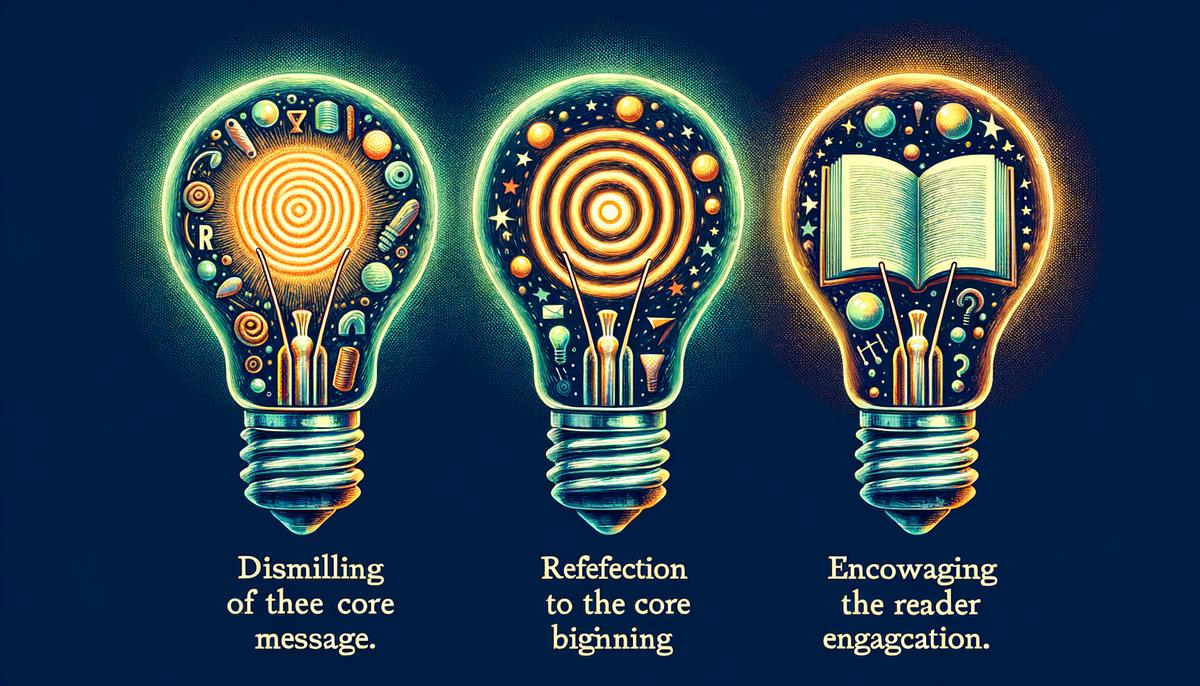Writing is more than putting words on paper; it’s about making those words count and leaving an imprint on the reader’s mind. A well-crafted piece doesn’t just share information; it transforms the reader’s way of thinking or acting. Through precise strategies and thoughtful execution, this article will guide you on how to conclude your writing with power, ensuring your core messages aren’t just understood but felt and remembered.
Identifying Core Messages
Creating a Powerful Conclusion by Identifying Core Messages
Crafting a potent conclusion isn’t simply about ending a discussion; it’s about leaving a lasting impact on your readers. One effective way to achieve this is through identifying and emphasizing core messages. Here’s how you can utilize this method to shape powerful conclusions that resonate.
Understand Your Core Message
First, pinpoint the central idea or message of your piece. Ask yourself, “What is the one thing I want my readers to remember?” Your core message is the essence of your writing, the theme that ties everything together. It’s what you’ve built your arguments or narratives around. Identifying this early on will set a clear direction for your conclusion.
Review Key Points
Briefly revisit the key points supporting your core message. Think of these as the building blocks that add weight and credibility to your central idea. By summarizing these points in your conclusion, you reinforce the core message, making it more memorable for your readers.
Show the Big Picture
Connect your core message to a broader context or the bigger picture. This could involve highlighting its relevance to real-world issues, trends, or future implications. It’s about showing your readers why your message matters beyond the confines of your writing. This approach not only elevates your conclusion but also encourages readers to reflect on the significance of your message in a wider context.
Call to Action or Reflection
Depending on your goals, end with a call to action or a moment of reflection. If your writing aims to persuade or motivate, directly encourage your readers to act on the information you’ve presented, linking this action back to your core message. Alternatively, if your goal is to inform or inspire reflection, pose a question or statement that invites your readers to ponder your core message and its implications in their own lives or beliefs.
Keep It Concise
Remember, a powerful conclusion is concise and to the point. Resist the urge to introduce new information or overextend your summary. Your aim is to reinforce, not to overload. A concise conclusion that effectively encapsulates your core message will leave a more lasting impression than one that wanders.
By focusing on identifying and highlighting your core message, summarizing key points, connecting to the bigger picture, and offering a clear call to action or reflection, you can craft conclusions that not only resonate deeply with your readers but also inspire them to think, feel, or act in meaningful ways. This approach ensures that your writing doesn’t just end—it leaves a mark.

Linking Back to the Beginning
Crafting an Effective Link Between Introduction and Conclusion
Linking your conclusion back to your introduction is not merely a stylistic choice—it’s a strategic move that can significantly enhance the effectiveness of your writing. By creating a “full circle” narrative, this technique reinforces your core message, making it more memorable for your audience. Let’s delve into understanding why this approach packs such a punch in conveying your ideas.
Creating a Sense of Unity and Closure
When your conclusion mirrors or references elements from your introduction, it gives your piece a sense of unity and completeness. This circular method produces a satisfying closure by reminding readers where they started and showing them how far the argument or narrative has traveled. It’s akin to tying up a neatly wrapped package with a bow—providing a polished and thought-out feel to your work.
Reinforcing the Core Message
A powerful aspect of linking the introduction and conclusion is the reinforcement of your core message. This repetition, when done subtly, helps to embed your main idea more deeply into the minds of the audience. By revisiting the initial premise at the end, you highlight its importance, making it more likely that readers will remember and reflect on your message long after they’ve finished reading.
Enhancing Coherence and Flow
The coherence of your piece is significantly improved when the start and end are interconnected. This link acts as a thread that weaves through your writing, pulling all the elements together into a cohesive whole. It provides a roadmap for readers, guiding them through your thought process in a way that feels intentional and logical. By ensuring your conclusion circles back to your introduction, you enhance the overall flow of your argument or narrative, making it easier for readers to follow and engage with your ideas.
Increasing Reader Engagement and Satisfaction
Finally, this technique boosts reader engagement and satisfaction. When readers see how your conclusion connects back to the introduction, they experience an “aha” moment—a sense of discovery and understanding. This not only makes the reading experience more enjoyable but also leaves your audience with a strong impression of your piece. A conclusion that comes full circle respects the reader’s journey through your writing and rewards their attention, making them more likely to return to your work in the future or take the action you’ve suggested.
In essence, linking your conclusion back to your introduction is a powerful strategy that enhances the unity, coherence, reinforcement of your core message, and reader satisfaction in your writing. By mastering this technique, you elevate the impact of your work, ensuring your ideas resonate strongly and linger in the minds of your audience.

Encouraging Reader Reflection or Action
Crafting a conclusion that prompts reflection or incites action is a pivotal step in effective writing. A well-crafted closing has the power to linger in the reader’s mind, influencing their thoughts or behaviors long after they’ve finished reading. Here’s how to achieve that:
Incorporate a Personal Touch
Tap into the personal dimension by sharing a brief, relatable story or anecdote that exemplifies the core message of your piece. The story should serve as a tangible illustration of the key theme, making it easier for readers to connect emotionally. This emotional resonance can be a strong motivator for reflection or action.
Pose Thought-Provoking Questions
Questions are powerful tools that can nudge readers into a reflective state. By posing a question related to your main topic, you encourage readers to ponder their own feelings, experiences, or beliefs. Choose questions that invite readers to examine how the information presented affects them personally or how it can be applied in their everyday lives.
Provide Practical Tips
While reflecting on the broader implications of your message is valuable, offering practical steps or tips encourages immediate action. Outline clear, simple actions that readers can take to apply the insights gained from your writing to their lives. These steps should be straightforward, fostering a sense of empowerment and readiness to act.
Highlight the Potential Impact
Emphasize the potential benefits or positive changes that could arise from considering your message or acting upon it. Whether it’s personal growth, societal benefits, or contributions to a greater cause, highlighting the impact can provide the motivational boost needed to inspire reflection or spur action.
Use an Inspiring Quote
An inspirational or thoughtfully chosen quote can encapsulate your message succinctly and powerfully. Select a quote that aligns closely with your main point and resonates with the themes discussed. A well-chosen quote can serve as a memorable takeaway, encouraging readers to reflect on the essence of your message.
Encourage Sharing and Discussion
Invite readers to share their thoughts, experiences, or the steps they plan to take in response to your piece. Encouraging dialogue—whether through comments, social media, or discussion with others—amplifies the reflective process and can lead to collective action or deeper personal insight.
By weaving these elements into your conclusion, you create a compelling closing that not only wraps up your piece effectively but also leaves a lasting impression. This approach fosters a deeper connection with your audience, encouraging them to engage with your message on a more meaningful level.

By emphasizing your core message, linking the start of your piece to its end, and inviting your audience to reflect or act, your conclusions will no longer serve as mere endpoints but as launching pads for deeper engagement. A thoughtfully crafted conclusion breathes life into your words, propelling them beyond the page and into the minds and hearts of your readers, making your writing not just a momentary encounter but a lasting influence.






